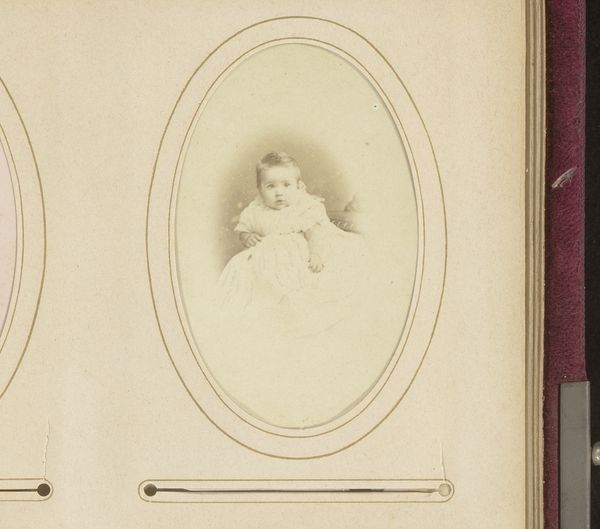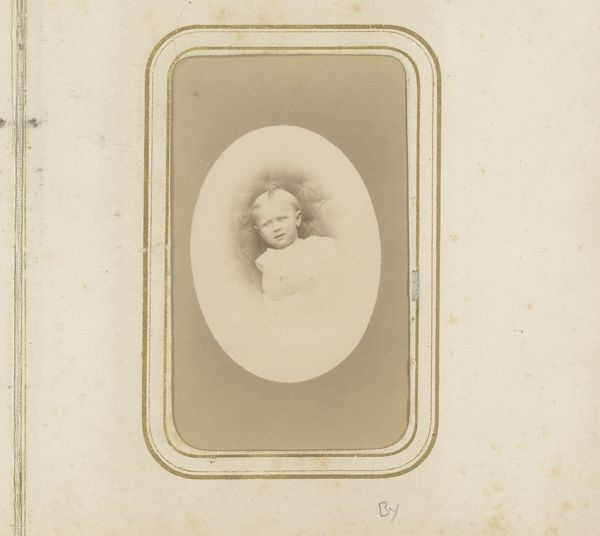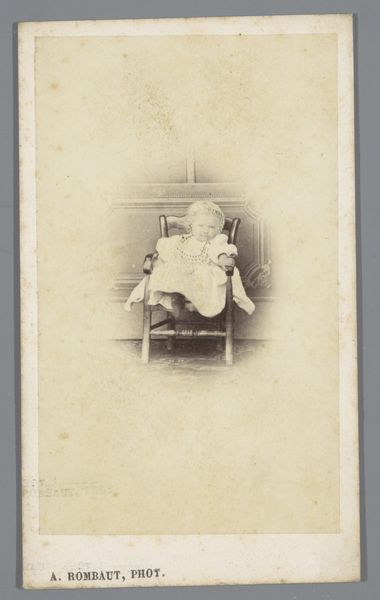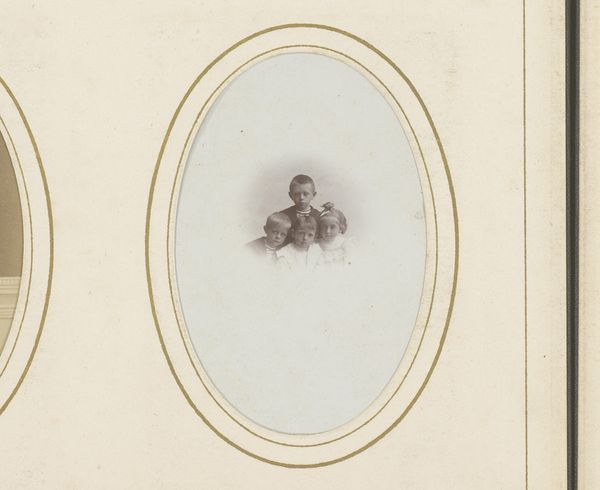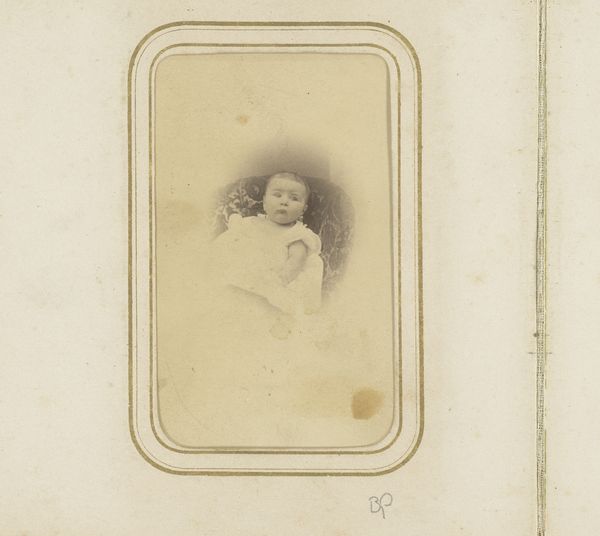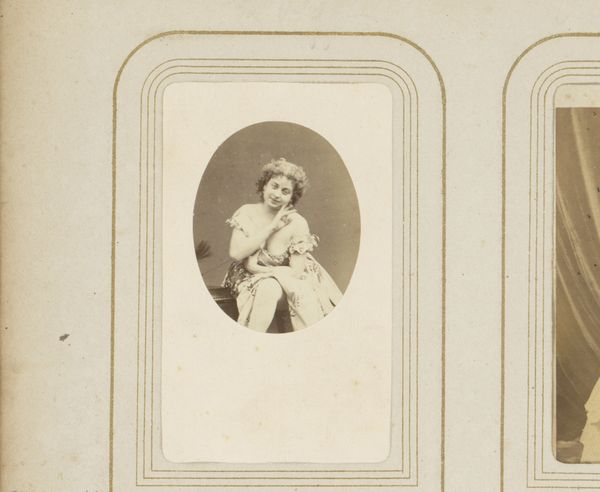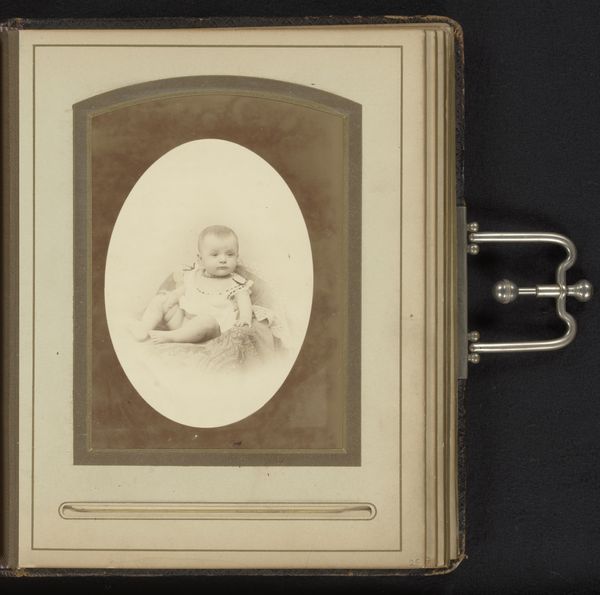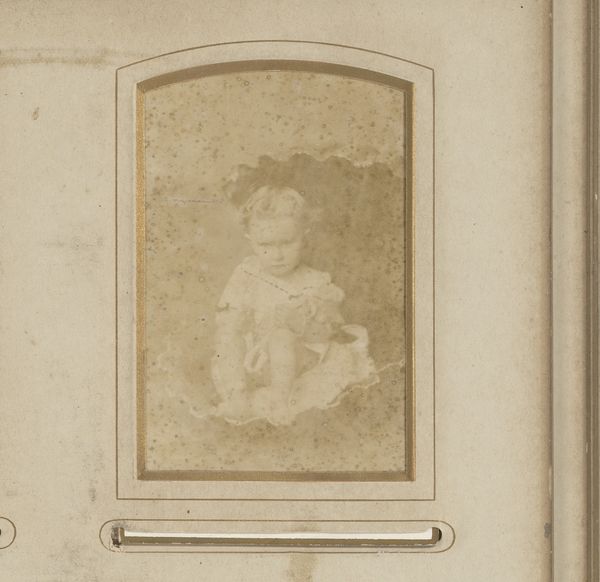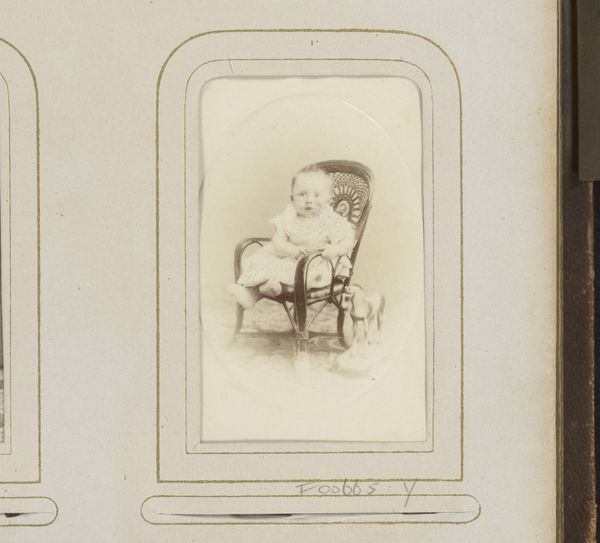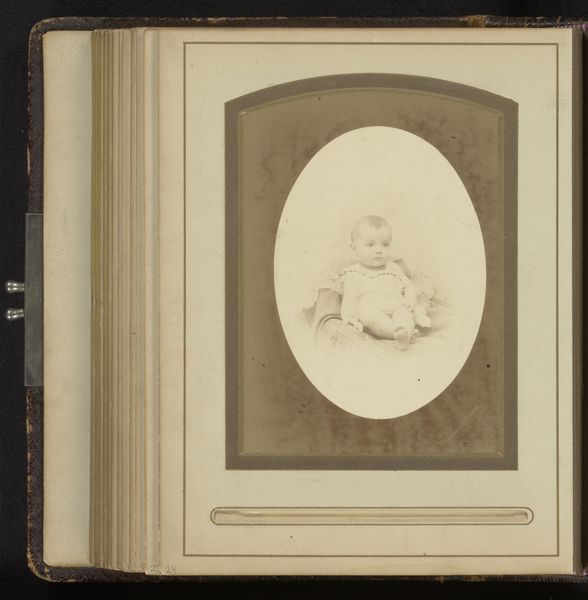
photography
#
portrait
#
photography
Dimensions: height 84 mm, width 51 mm
Copyright: Rijks Museum: Open Domain
Curator: Looking at this artwork, one immediately confronts the sheer weight of early photographic portraiture—the pressure to perform permanence. Editor: It certainly evokes a specific somberness, doesn't it? The Portrait of a Baby, made with photography between 1870 and 1890 by Confeld von Felbert, it is so fragile! The muted tones and aged texture speak volumes about the past. Curator: Indeed. Photography at this time was an industry striving to depict permanence, capturing likenesses in the face of constant loss. And, look at this infant's gaze: solemn and unfathomable, embodying an echo of our collective past. We should consider how photography as a tool served specific ideological agendas. Editor: The baby's serious expression also brings forth so much compassion. Perhaps a modern eye looks at it, and the very young person embodies so much truth, that it forces feelings of sorrow to surface... Was it common to depict infants looking solemn back then, as part of popular imagery? Curator: Child portraits were heavily coded; seriousness projected a kind of ideal citizen in miniature, part of this era where progress depended upon societal performance. It contrasts deeply with how childhood is represented nowadays. The framing, a standard form, suggests wider access to photographic representation. But it begs questions: who commissioned this image, and how did they hope this representation will be perceived? Editor: And how the fragility and fleeting nature of early childhood intersect with the heavy permanence granted through photographic technology! To have a frozen frame and fixed view on something always in motion, someone always growing... It strikes me as a deeply philosophical contradiction, worthy of contemplation. Curator: These echoes are what haunt these historical portraits. They are more than personal; they symbolize shifts in power, technology, and cultural memory itself. And now, this piece becomes a mirror, inviting us to reflect on these ideas with present-day considerations. Editor: Absolutely. There is still a profound connection between us, even with this historical gap, because humans want to be remembered, despite life's brevity and change, as individuals or as societies.
Comments
No comments
Be the first to comment and join the conversation on the ultimate creative platform.
